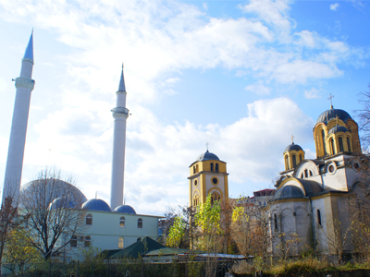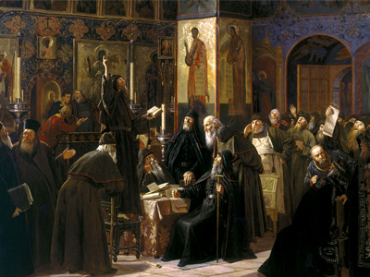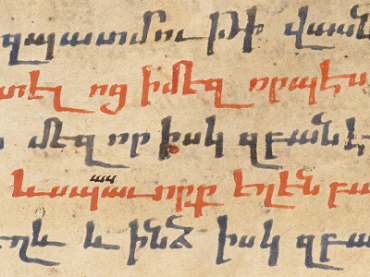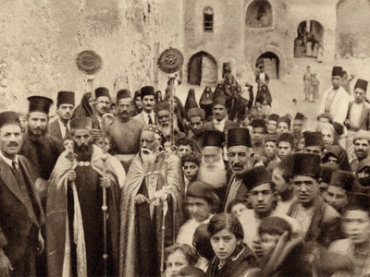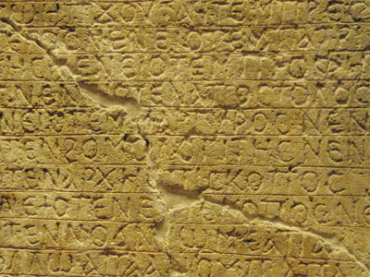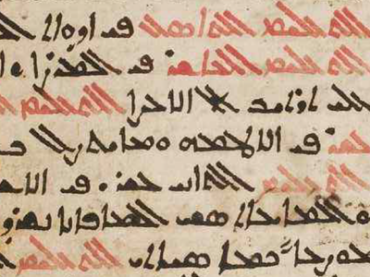Syriac and Eastern Christianity
The Theophaneia School
Jewish Roots of Eastern Christian Mysticism
Edited by Basil Lourié & Andrei A. Orlov
ISBN: 978-1-60724-083-9
Scrinium: Revue de Patrologie, d’Hagiographie Critique et d’Histoire Ecclésiastique, established in 2005, is an international multilingual scholarly periodical devoted to patristics, critical hagiography, and Church history. This volume is dedicated to Jewish Second Temple and early Christian mysticism.
$215.00
Selected Papers Presented to the Western Pacific Rim Patristics Society
3rd Annual Conference (Nagoya, Japan, September 29 – October 1, 2006) and other patristic studies
Edited by Vladimir Baranov & Basil Lourié
ISBN: 978-1-60724-084-6
Scrinium: Revue de Patrologie, d’Hagiographie Critique et d’Histoire Ecclésiastique, established in 2005, is an international multilingual scholarly periodical devoted to patristics, critical hagiography, and Church history. This volume contains a partial publication of the papers of the 3rd Conference of the Asian Pacific Early Christian Studies Society which was focused on patrology, with special attention paid to patristic biblical interpretation.
$217.00
Miaphysite Christology
An Ethiopian Perspective
ISBN: 978-1-60724-528-5
As in the case of the christology of the other non-Chalcedonian Oriental Orthodox Churches, Ethiopian christology is usually nicknamed as monophysite christology - an erroneous christological position which indicates the absorption of the humanity of Christ by its divinity. Disproving such a pejorative designation, this book contends that the christological position of the Ethiopian Orthodox Tewahedo Church should correctly be termed as miaphysite christology, which highlights the one-united nature of the Word of God incarnate. Besides, the book proves the orthodoxy of Ethiopian christology, demonstrating how it is based on the christology of St. Cyril of Alexandria.
$123.00
The Demonstrations of Aphrahat, the Persian Sage
By Adam Lehto
Series: Gorgias Eastern Christian Studies 27
ISBN: 978-1-59333-768-1
Among the earliest known sources from the Persian Church, the 4th-century Demonstrations of Aphrahat reflect a form of Christianity much closer to its Jewish roots than contemporary Western forms. Their mix of ascetic instruction, polemic against Judaism, and theological reflection provides an invaluable glimpse into this otherwise poorly documented period.
$228.00
John of Tella’s Profession of Faith
The Legacy of a Sixth-Century Syrian Orthodox Bishop
Translation and Introduction by Volker Menze & Kutlu Akalın
Series: Texts from Christian Late Antiquity 25
ISBN: 978-1-59333-843-5
John became bishop of Tella in 519, but left for exile only two years later when Justin I enforced the Council of Chalcedon which Syrian Orthodox Christians refused to accept. John became one of Justinian’s most dangerous ecclesiastical opponents by ordaining thousands of deacons and priests who formed the first generation of the Syrian Orthodox hierarchy. In the present text John lays out his faith in a way which gives an inside view of how a non-Chalcedonian bishop of the sixth century located himself and his co-religionists within the Christian tradition and how he understood the foundation of the Church.
$43.00
Bride of Light
Hymns on Mary from the Syriac Churches
Translated by Sebastian P. Brock
Series: Moran Etho 6
ISBN: 978-1-59333-845-9
Syriac is particularly rich in poetry on Mary. Not only is some of this of great tenderness and beauty, but much is also highly imaginative. The present selection of translations includes lyric poems (several by St Ephrem), five lively dialogues, and a longer narrative poem on Mary and Joseph.
$79.00
The History of the Great Deeds of Bishop Paul of Qentos and Priest John of Edessa
Series: Texts from Christian Late Antiquity 29
ISBN: 978-1-60724-670-1
Desiring to lead an ascetic life during the 5th century, Paul abandons his bishopric in Italy and travels to Edessa. John realizes that Paul is a wonderworker, and so begs to accompany him on his travels. The two leave Edessa to visit the monks on Sinai, but instead of reaching their destination they are abducted and taken to Yemen by tree-worshipping Arabs. After a battle with a tree-god, they succeed in converting the Arabs to Christianity. During the journey home, they encounter a wandering band of monks among whom is a woman disguised as a man.
$38.00
Christians under the Ottoman Turks
French and English Travellers in Greece and Anatolia (1615-1694)
Series: Gorgias Ottoman Travelers 2
ISBN: 978-1-59333-922-7
In the 17th century Britons left their country in vast numbers - explorers, diplomats, ecclesiastics, merchants, or simply “tourists.” Only the most intrepid ventured into the faraway lands of the Ottoman Empire. Their travel narratives, best-sellers in their day, provide an entertaining but also valuable testimony on the everyday life of Orthodox Christians and their coexistence with the Turks. Greek Christians, though living under the Ottoman yoke, enjoyed greater religious freedom than many of their brothers in Christian Europe. The travelers’ intellectual curiosity about Greece opened a window on the Orthodox Church, and paved the way for future dialogue.
$162.00
Suryoye l-Suryoye
Ausgewählte Beiträge zur aramäischen Sprache, Geschichte und Kultur
Edited by Shabo Talay
Series: Bibliotheca Nisibinensis 1
ISBN: 978-1-59333-667-7
The present volume contains a collection of papers on different aspects of Aramaic linguistics, history and culture. These diverse papers are specifically intended for an informed Aramaic readership interested in raising awareness of their own culture. A fresh range of topics is therefore presented in this flagship volume of the series, offering a renewed vision of Aramaic and Syriac studies even for the specialists in the field.
$142.00
The Ostraca of the Coptic Museum in Old Cairo, Egypt
Compiled by S. Kent Brown
Series: Gorgias Handbooks 13
ISBN: 978-1-60724-014-3
The Ostraca of the Coptic Museum, written on pottery pieces, limestone flakes and wood, present the lives of ordinary people in their interactions with one another, and includes their economic and personal affairs. This volume is a catalog of the 1,127 ostraca in the museum.
$179.00
Studies on Jacob of Edessa
Edited by Gregorios Yohanna Ibrahim & George Anton Kiraz
Series: Gorgias Eastern Christian Studies 25
ISBN: 978-1-60724-997-9
Jacob of Edessa was a seventh century polymath who witnessed the coming of Islam. In this collection of papers, specialists discuss the life and works of this figure with emphasis on the cultural landscape of the seventh century. Contributors include Sebastian P. Brock, Richard Price, Andreas Juckel, Alison Salvesen, Theresia Hainthaler, Amir Harrak, and Khalid Dinno.
$163.00
A Reassessment of the Evidence and a New Interpretation
Series: Gorgias Eastern Christian Studies 22
ISBN: 978-1-60724-074-7
This comprehensive study offers a critical, comparative analysis of the sources available on Bardaisan and a reinterpretation of his thought. The study highlights the profound points of contact between Bardaisan, Origen, and their schools; the role of Plato’s Timaeus and Middle Platonism in Bardaisan’s thought, and Stoicism. Bardaisan’s thought emerges as a deeply Christian one, depending on the exegesis of Scripture read in the light of Greek philosophy. Positive ancient sources present him as a deacon or even a presbyter, as an author of refutations of Marcionism and Gnosticism, and as a confessor of the faith during persecution.
$208.00
Virtuous Reading
Aphrahat’s Approach to Scripture
Series: Analecta Gorgiana 121
ISBN: 978-1-60724-035-8
The epistemology of the mid-fourth-century Christian scholar in Persia, Aphrahat, presumes that the human mind and the task of biblical interpretation are caught up in a dynamic experience of Christian spiritual transformation. In short, for the Persian Sage, good Bible interpretation requires nothing less than the total person—inner and outer, in community and before God. In Aphrahat’s Demonstrations, we encounter a scholar who not only presents this remarkably integrated set of ideals but is also an impressive practitioner of them.
$37.00
Approximation of the ‘traditions’ in Jacob of Edessa’s Revision of Isaiah
Series: Analecta Gorgiana 124
ISBN: 978-1-60724-036-5
This article contributes to the knowledge of Jacob of Edessa’s (d. 708) Old Testament revision by editing twenty texts (a total of 80 verses) from the Book of Isaiah and comparing them with the Greek recensions of the Septuagint, with the Peshitta, and the Syrohexapla. Two special features are introduced to set out Jacob’s revision technique in some detail: 1. comparison with an earlier undeveloped stage of Jacob’s revision extant in Ms Add 17,134 of the British Library; and 2. the distinction (by different colours and fonts) of the ‘traditions’ involved in the definite stage of his revision. Both features point to the emphasis given to the Peshitta in translating the substantial Greek text of the Old Testament.
$43.00
Zur Datierung nach christlicher Ära in den syrischen Kirchen
Series: Analecta Gorgiana 125
ISBN: 978-1-60724-038-9
The Christian era in Syriac and Arabic sources does not always correspond with the western calculations. Until quite recently the members of the Syriac churches used the era of the Seleucids (of Alexander the Great; East and West Syrians) as the era of the creation of Adam (Melkites). The use of the Christian era became more common from the 16th century, due to the closer contacts between the Oriental and the Latin churches.
$43.00
Transcribed Proper Names in Chinese Syriac Christian Documents
Series: Analecta Gorgiana 127
ISBN: 978-1-60724-039-6
Christianity reached China in its Syriac guise in the seventh century. Christian documents written in Chinese which have come down to us from the period of the Tang Dynasty contain a large number of proper names which are, or appear to be, transcriptions of Syriac names. In this paper, originally published in Malphono w-Rabo d-Malphone: Studies in Honor of Sebastian P. Brock, the author provides a list of the transcribed proper names with their modern and reconstructed Middle Chinese pronunciations, together with the suggestions made by scholars in the past for the original forms of these names.
$38.00
Between Christology and Kalām? The Life and Letters of George, Bishop of the Arab Tribes
By Jack Tannous
Series: Analecta Gorgiana 128
ISBN: 978-1-60724-040-2
A translator of Aristotle and friend of Jacob of Edessa and Athanasios of Balad, George, Bishop of the Arab Tribes (d. AD 724) was an important figure in the history of the life and thought of the Syrian Orthodox Church. This article offers a study of the first three of George’s eleven extant letters and relates them to the larger Christian and Islamic context of his day. It will be of interest to students of Greek patristics, Syriac Christianity, and early Islamic history.
$41.00
Al-Farabi and the History of the Syriac Organon
By John Watt
Series: Analecta Gorgiana 129
ISBN: 978-1-60724-041-9
Scholarly study of the transmission of Aristotelian philosophy from Greek late antiquity to medieval Islam is to some extent still influenced by the account in Ibn Abī Uṣaibi‛a attributed to al-Fārābī, which served as the basis for Max Meyerhof’s famous essay Von Alexandrien nach Bagdad. The present work, utilising evidence unknown to Meyerhof and still often neglected in more recent scholarship, argues that such a restriction never represented the whole Syriac tradition, but reflects an alternative logical curriculum with deep roots in the ancient world, while Syriac writers who were proficient in Greek adhered throughout to the other strand of this two-strand tradition, that of the full Organon.
$37.00
Biblical Women as Images of Church in Jacob of Serug
Series: Analecta Gorgiana 123
ISBN: 978-1-60724-050-1
This study seeks to address the common bridal imagery pervasive in ancient Syriac Christianity by asking how Jacob of Serug employed the presentation of biblical women in his homilies to serve as imagery for the Church.
$37.00
East and West
Essays on Byzantine and Arab Worlds in the Middle Ages
Series: Gorgias Eastern Christian Studies 15
ISBN: 978-1-60724-056-3
Twenty-four contributions on matters dealing with Byzantine and Oriental lands, people, and cultures through different perspectives, including history, maritime trade, documents, travelers, and art. These essays trace the history of the relations between the Greeks and the peoples of the Middle East from Late Antiquity up to the seventeenth century.
$202.00
Yours, Mine, or Theirs? Historical Observations on the Use, Collection and Sharing of Manuscripts in
Series: Analecta Gorgiana 126
ISBN: 978-1-60724-059-4
In the west centuries ago manuscripts were replaced by printed books, and relegated to mostly secular libraries as a result of religious and political upheavals. In the Christian Orient such changes were slower and remain less advanced. Manuscripts have not entirely vanished from regular use, and Christian communities retain ownership of significant collections of their historic manuscripts. The vital connection between manuscripts and religious culture endures, even if attenuated by persecution, diaspora, technology, and other aspects of modernity. This essay provides an historical survey of these issues in both Europe and the Christian Orient (limited here to the Middle East, the Caucasus, and Ethiopia/Eritrea).
$36.00
The Forgotten Bishops
The Malabar Independent Syrian Church and its Place in the Story of the St Thomas Christians of South India
By John Fenwick
Series: Gorgias Eastern Christian Studies 20
ISBN: 978-1-60724-619-0
The Malabar Independent Syrian Church is the smallest of the jurisdictions into which the St Thomas Christian community is divided today. It has, however, played a crucial role in the development of the Syrian Churches, whose stories can not be told without it. The present work shows how the bishops of this tiny, one-Diocese Church, now largely forgotten, once stood at the centre of the events that shaped the present ecclesiastical situation.
$257.00
Kassia the Nun in Context
The Religious Thought of a Ninth-Century Byzantine Monastic
By Kurt Sherry
Series: Gorgias Eastern Christian Studies 14
ISBN: 978-1-61143-969-4
Kassia the Nun offers a unique glimpse into ninth-century Byzantium in the only woman whose works were included in the corpus of liturgical hymns. This volume explores Kassia’s thought on Christology, on gender, and on monasticism itself. It provides readers with an opportunity to know this woman of remarkable intellect, wit, and piety by drawing primarily on her own words. Kassia’s is one of the only female voices from ninth-century Byzantium and this volume accordingly examines her reflections on gender in the context of her society and concludes that she represents a perspective that might be described as feminist.
$123.00
The Two Syriac Versions of the Prayer of Manasseh
Series: Gorgias Eastern Christian Studies 30
ISBN: 978-1-4632-0050-3
The authors present a detailed philological and linguistic comparison of two versions of The Prayer of Manasseh. Combing state-of-the-art computational tools together with traditional philology, the texts are compared at all linguistic levels, from their vocabulary up to their discursive structure, with a special emphasis on their morphology and syntax. The results are revealing not only for the question of the relationship between the two versions, but they also illuminate various debates pertaining to Syriac syntax.
$184.00
Jacob of Sarug’s Homily on the Partaking of the Holy Mysteries
Translation and Introduction by Amir Harrak
Series: Texts from Christian Late Antiquity 19
ISBN: 978-1-60724-086-0
This edition of Mar Jacob of Sarug's (d. 521) homily on Partaking in the Holy Mysteries is one of Jacob’s memre on the sacraments. In this homily, Jacob is shocked that some of his congregants are leaving the service early, before the eucharist has been celebrated. He emphasizes the importance of the liturgical celebrations for a Christian life in a message still applicable today. The volume constitutes a fascicle of The Metrical Homilies of Mar Jacob of Sarug, which, when complete, will contain the original Syriac text of Jacob's surviving sermons, fully vocalized, alongside an annotated English translation.
$31.00
Filter by
Filter by price
Filter by manufacturer

